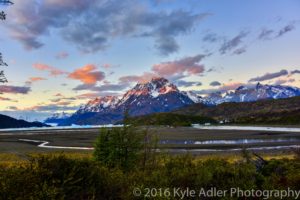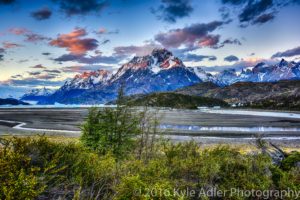In a recent post (Post on Circus Automatic), I shared several practical tips for shooting fast-moving indoor performances, using a circus performance as an example. While I was happy with many of my images from that evening’s shoot, I discussed how the single-colored LED lights now used at many indoor performances can impart an unnatural color cast to photos that can be hard to correct in post-processing. In today’s post, I show how converting these images to black-and-white can overcome some of the limitations of shooting under these adverse lighting conditions, with the added bonus that the noise imparted to the images (from having to shoot at a very high ISO setting) can also be less noticeable in black-and-white conversions.
First, a little background explanation on why these LED lights are so troublesome for the photographer to work with. When we refer to the resolution, or number of pixels, in our camera’s sensor, that number is actually the total count of three different kinds of pixels, each kind sensitive to only one of the three primary colors (red, blue, and green). Without going into the nitty-gritty technical details, suffice it to say that in most camera sensors, about 50% of the pixels record only green data, about 25% only red data, and about 25% only blue data. My camera (the Nikon D810) is said to have a resolution of 36.3 megapixels (MP), but if my subject is lit by a single-colored red LED, in reality only about 9 MP of resolution is recorded. The other two color channels will essentially contain no data. This is bad for several reasons, most notably because the image will be cast unnaturally toward the red color channel and because its effective resolution will be low.
There’s very little we can do in post-processing to recover from the loss of resolution during capture, but we can adjust the color temperature to try to correct a little bit of the strange color cast. Converting the image to black-and-white, though, can restore the image to a more natural appearance by masking the color cast. This can be aided by using Lightroom’s contrast and color control sliders to adjust the balance of the black-and-white version until it appears closest to a normal tone.
Consider the following two versions of the same shot. The first version is in color, and even after adjusting the color temperature and contrast, there is still a distracting red color cast. There is also some noise apparent in the image as a result of the high ISO setting required to freeze the acrobats’ motion.
 The color version of this image appears unnatural even after adjusting color temperature, due to the lighting which consisted of a red-colored LED array.
The color version of this image appears unnatural even after adjusting color temperature, due to the lighting which consisted of a red-colored LED array.
Now, take a look at the black-and-white version of the same image. Creating this version required careful attention to the balance of each color and contrast setting to make the final image. The good news: the monochrome image appears much more natural to the eye than does the color version. The skin tones seem less artificial, and the curtain in the background does not distract as much. Furthermore, there is less noise apparent in the black-and-white version.
 The same shot appears more natural and less noisy when converted to a black-and-white photo. Buy this photo
The same shot appears more natural and less noisy when converted to a black-and-white photo. Buy this photo
This next shot appears much more acceptable in its color version. During a live performance, the lighting often changes drastically from one moment to the next, and in this image the LED lights didn’t impart as harsh a red cast as in the previous image. Furthermore, the aerialist was dressed entirely in red and was working with red ropes, so what red color cast was present does not appear as unnatural.
 This image is highly effective when presented in full color. Buy this photo
This image is highly effective when presented in full color. Buy this photo
While I like this image for its dramatic power and strikingly vibrant red colors, let’s take a look at a black-and-white conversion for comparison. The monochrome version lacks the visceral impact of the strident red color, but it benefits from a more natural tone, a quasi-documentary look and feel, and a nice clean black background. In this case, the black-and-white conversion doesn’t so much rescue the image as change the kind of feeling it elicits. I like both versions.
 The black-and-white version is cleaner and evokes a very different set of emotions than does the color version. Buy this photo
The black-and-white version is cleaner and evokes a very different set of emotions than does the color version. Buy this photo
When you are forced to shoot under very difficult lighting conditions, try converting to black-and-white during post-processing. It just might rescue some of your images and can evoke a very different feel in other images.
For a refresher on the black-and-white conversion process and when you may want to use it, read this post: Post on B&W Conversion.
During post-processing, have you been able to rescue or improve images shot under challenging lighting conditions? Did you convert to black-and-white, or use different techniques? Please share your experiences here.


 This HDR image of Lago Grey with its glacier and the peaks of Torres del Paine National Park in Chile was processed using Photoshop’s HDR tools. The colors appear unnaturally saturated and parts of the image (especially the tops of the mountains and the brush in the foreground) show some ghosting effects.
This HDR image of Lago Grey with its glacier and the peaks of Torres del Paine National Park in Chile was processed using Photoshop’s HDR tools. The colors appear unnaturally saturated and parts of the image (especially the tops of the mountains and the brush in the foreground) show some ghosting effects. This version was processed using the Nik Collection’s HDR Efex Pro tools. The colors look much more natural and all parts of the image appear sharp and free from ghosting.
This version was processed using the Nik Collection’s HDR Efex Pro tools. The colors look much more natural and all parts of the image appear sharp and free from ghosting.